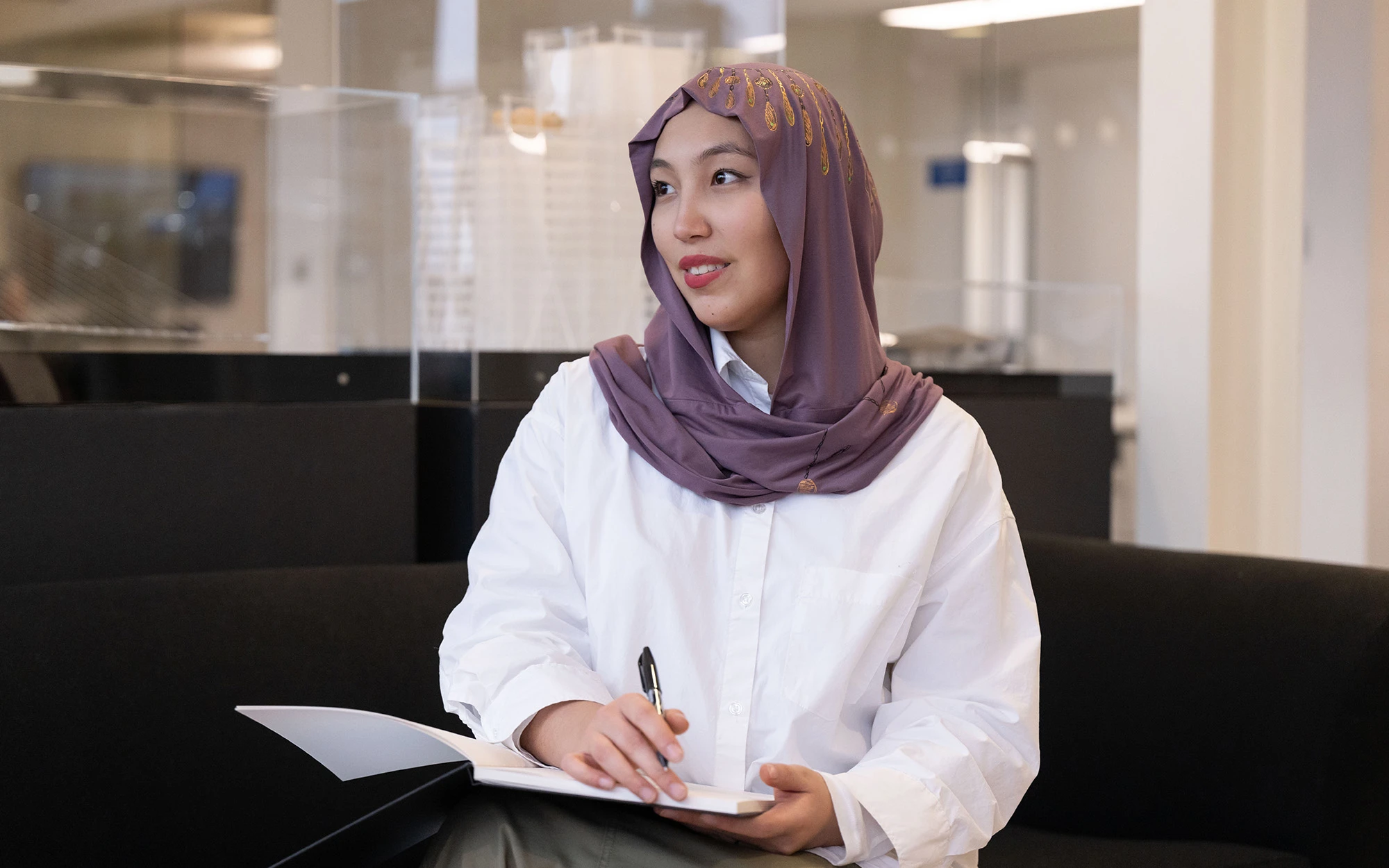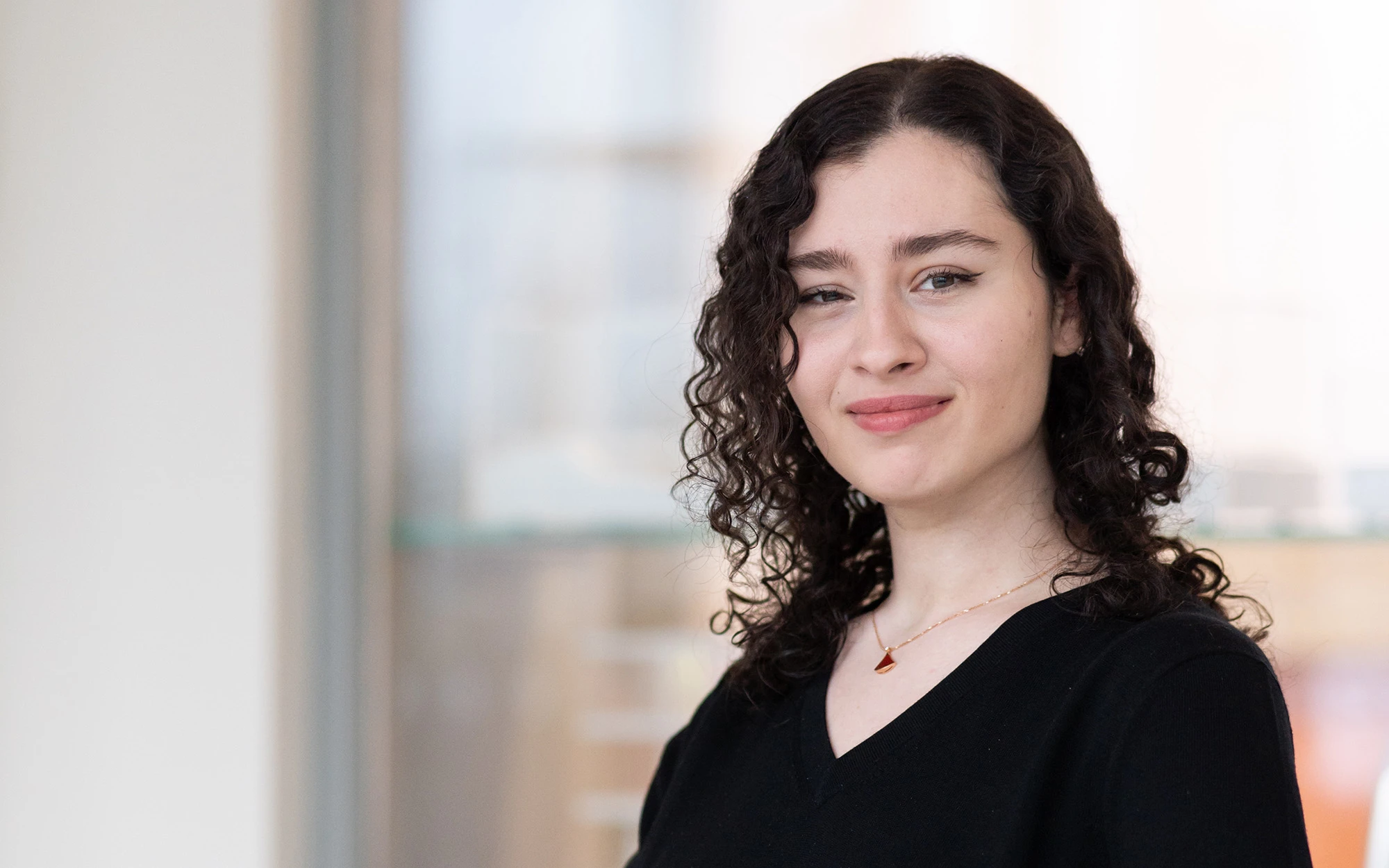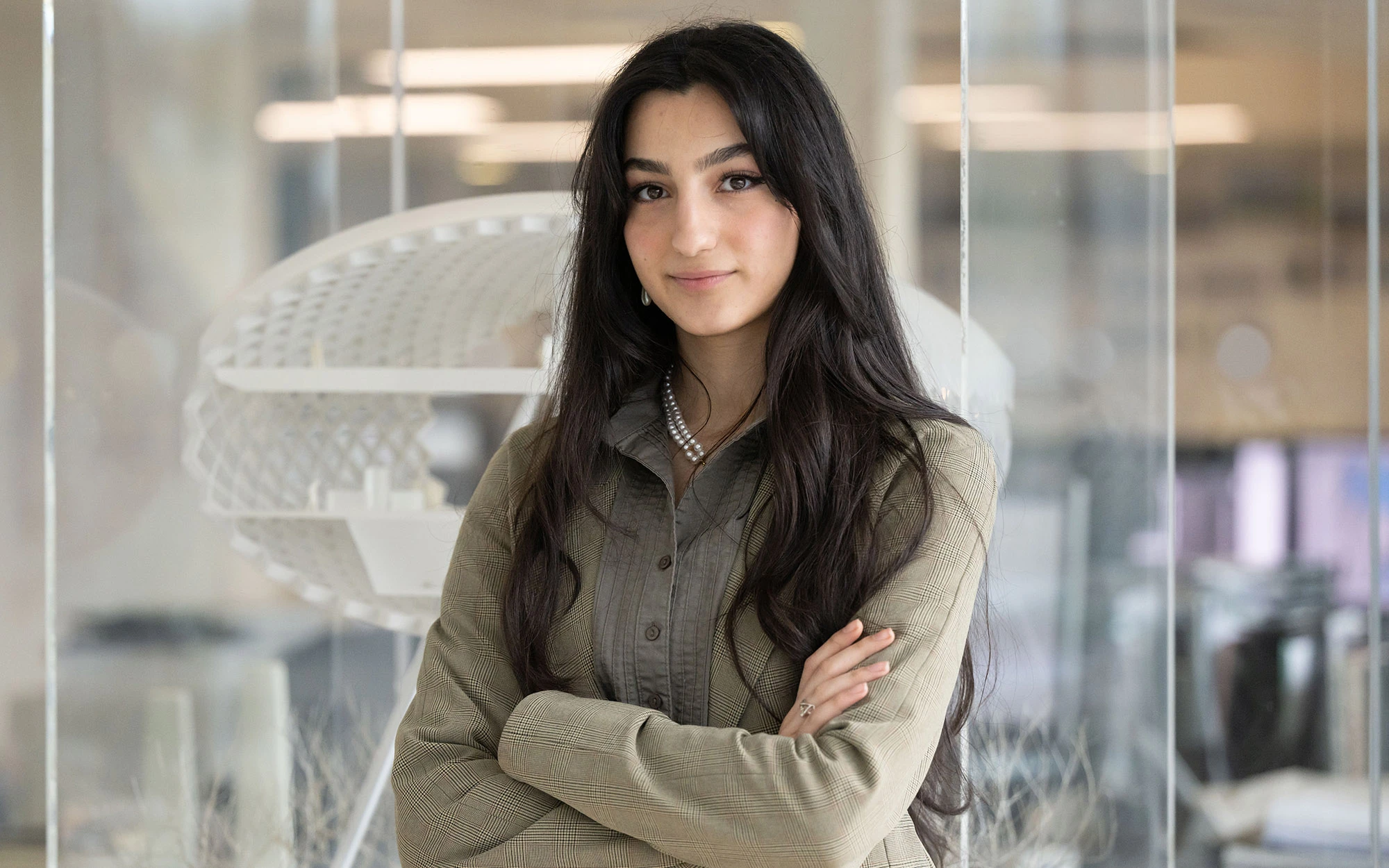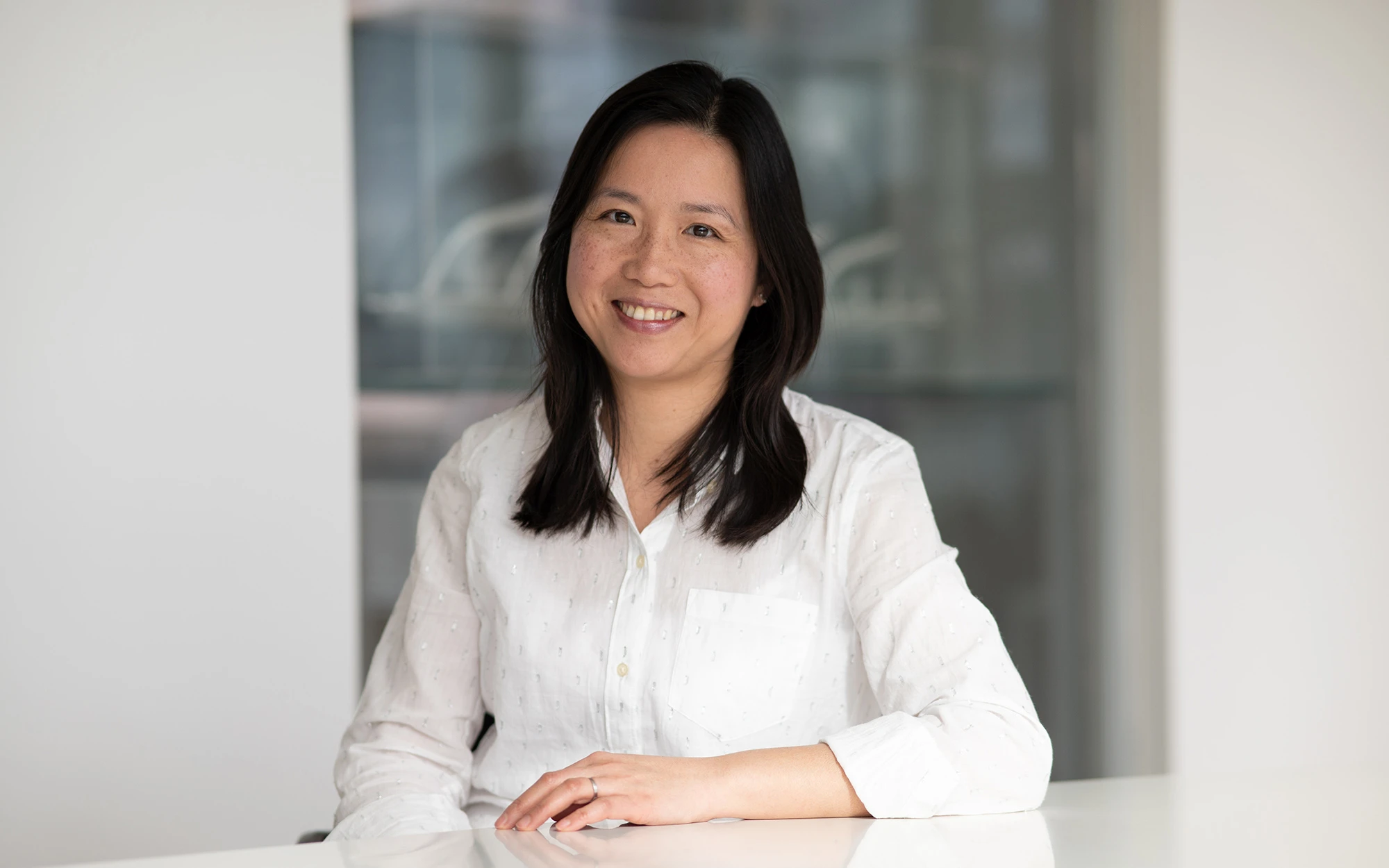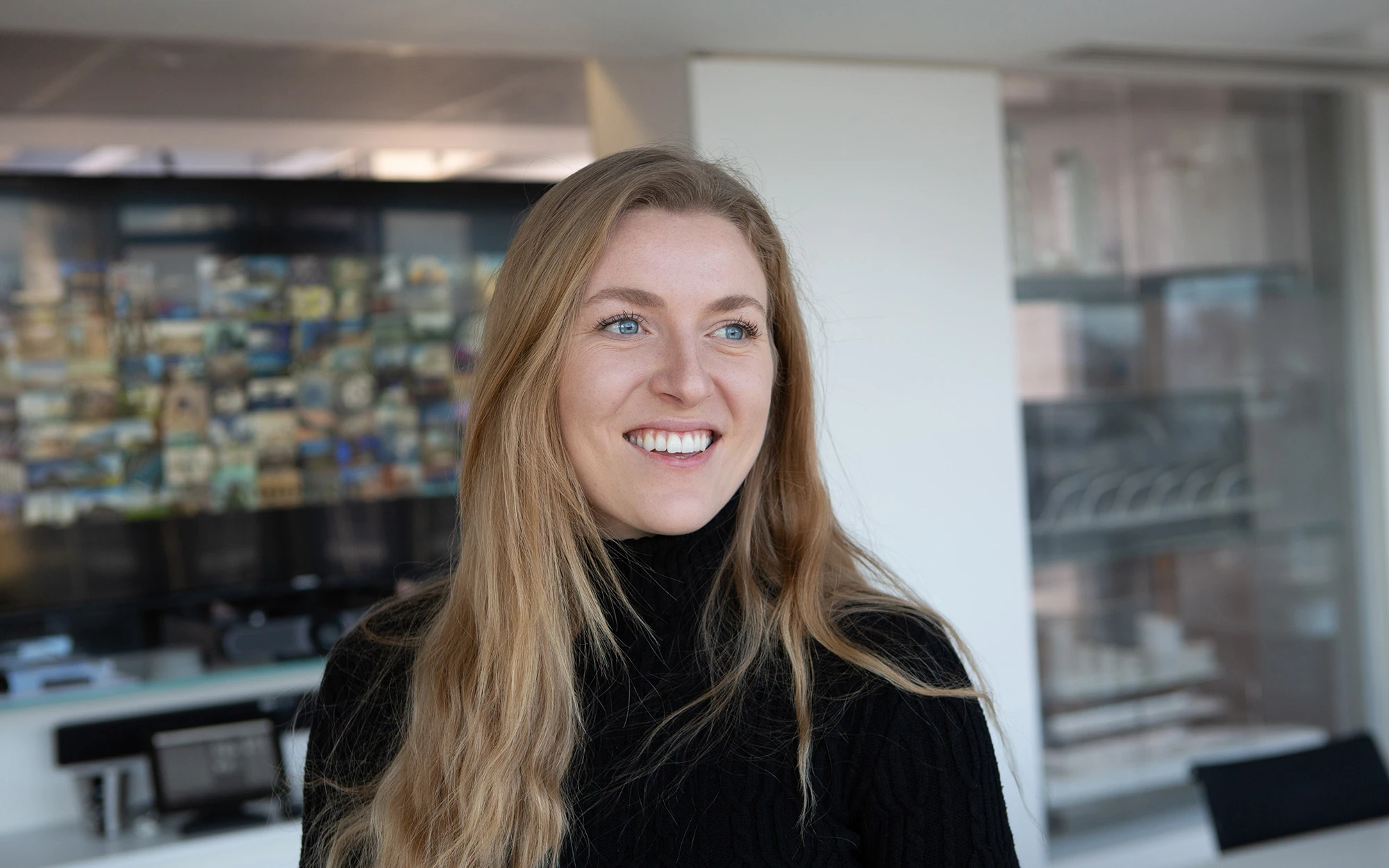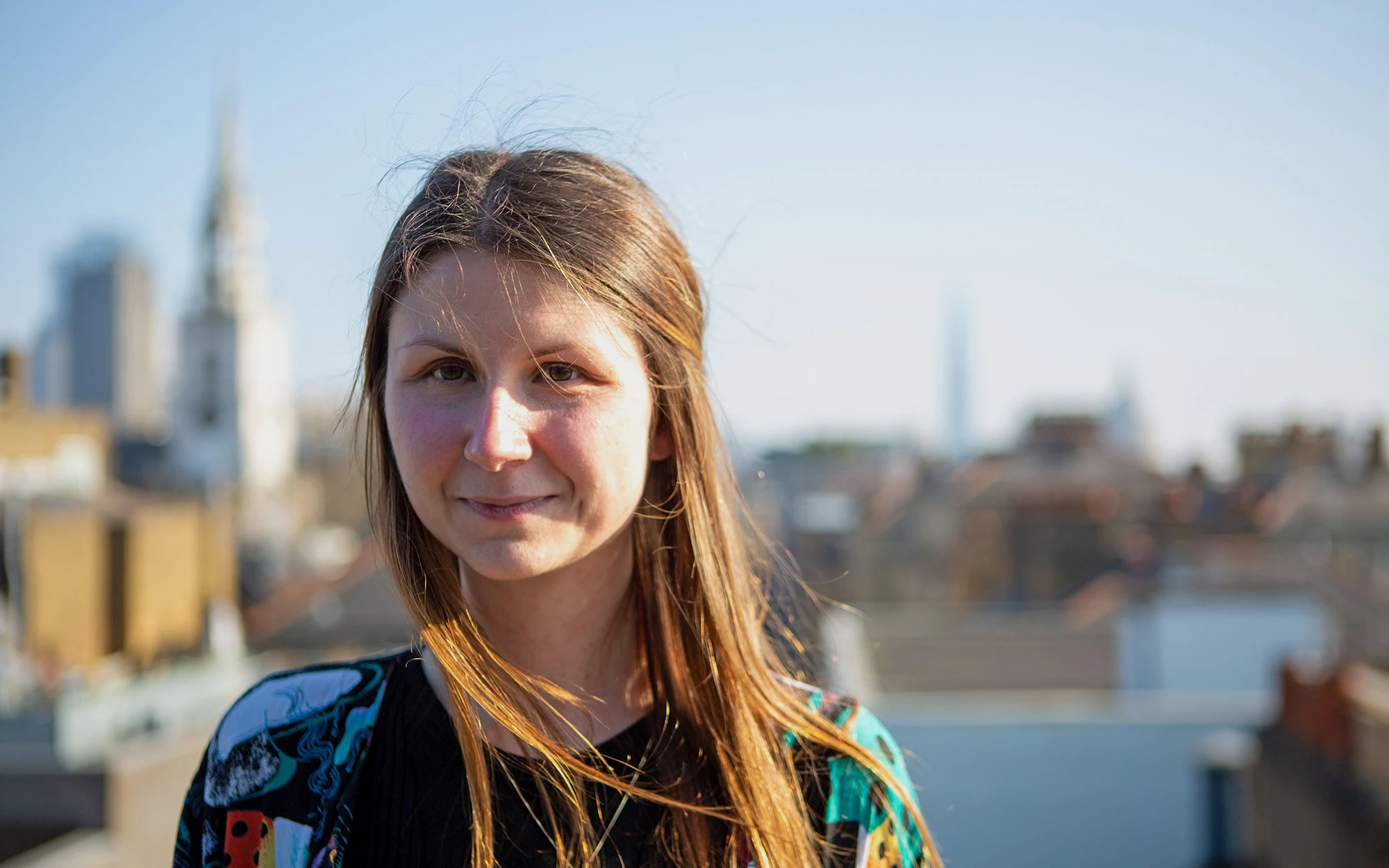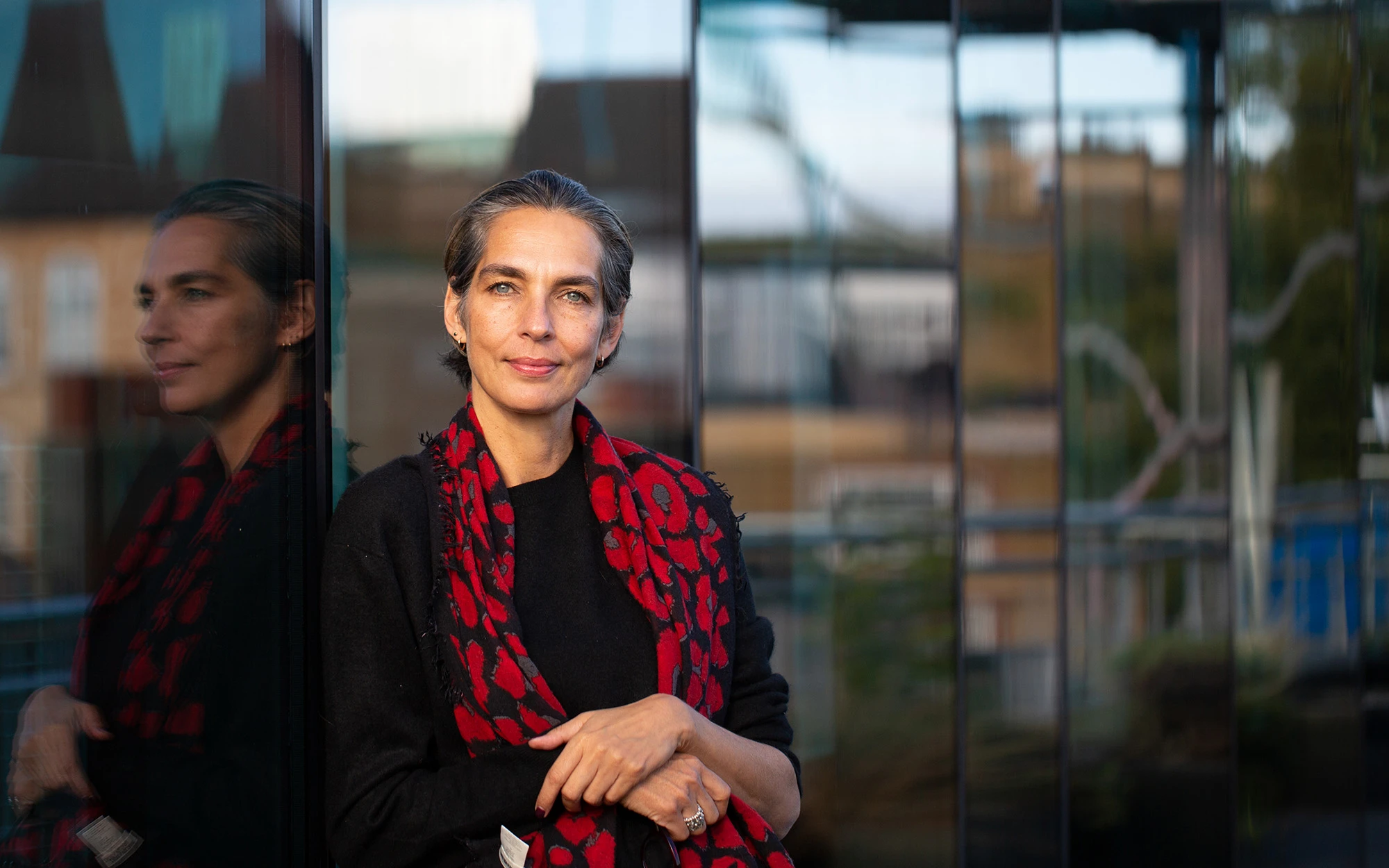Women in Architecture 2023
We're sharing the stories of five female team members
In honour of International Women’s Day and Women’s History Month, we are highlighting the journeys of five female team members who represent different roles and career stages at WilkinsonEyre. They will be sharing their honest experiences working in the industry and offering advice for future generations of women considering a career in architecture.
Sandi Nurpeissova, BIM Coordinator
How did you start working in this industry?
My journey in architecture and BIM started by learning the software Revit and discovering its potential as a powerful design tool. At the time it was growing in popularity in the industry, and I quickly realised that mastering this software could lead to many opportunities in the field of architecture and construction. I attended professional training for Revit and eventually began teaching professionally at an Autodesk training center. Teaching required that I continue to learn more, eventually leading to a career in Building Information Modeling.
As a young woman, I am excited to be part of a field that is constantly evolving and pushing the boundaries of what is possible. My job involves supporting architects by providing them with tools that help make their work more efficient. Which in turn allows them more time to focus on their designs and to positively impact the world. This sense of purpose and the opportunity to make a positive difference in the world is what motivates and inspires me to continue working in the sector.
Can you tell me about a specific challenge you faced as a woman in this industry?
I faced a significant challenge when I discovered that I was pregnant after having taken a new job. I was worried about telling my new workplace because of previous experiences of friends and family who were passively discriminated against and not taken seriously in their careers. Thankfully, they were supportive and understanding of my situation, helping to alleviate my concerns.
However, even though my situation had a positive outcome, it highlighted to me the challenges that women face in the architecture and BIM industry, particularly when it comes to balancing their personal and professional lives. There still is some stigma around pregnancies and women in the industry may feel pressured to hide their pregnancies or put their careers on hold, which can negatively impact their opportunities for advancement and professional development.
What advice do you have for women interested in a career in architecture?
BIM is a rapidly growing field and being willing to take on new tasks and responsibilities can help you to develop your skills and gain valuable experience. Knowledge and skills are power in the BIM industry. It’s essential to continue learning and staying up to date with the latest trends and technologies. Try to expand your knowledge and develop new skills. Networking with other professionals, seeking out mentors, and participating in online forums and communities can help you connect with others in the industry, providing you with the opportunity to learn from their experience.
It's also important to note that the BIM industry is not immune to gender biases and discrimination. As a woman in the industry, it’s important to advocate for yourself, seek out supportive workplaces, and network with other women in the industry to build a support system. Last but not least, always remember that you have valuable skills and perspectives to contribute to the industry, and never undervalue yourself. This is probably the most important piece of advice from me.
Aside from your career in BIM, do you have any other passions and qualifications?
I’m passionate about empowering women to prioritise their health and wellbeing, especially those working in demanding industries like architecture. Women’s health is often neglected, but it’s a resource that we can control and that is required for all aspects of our lives. When I faced significant health issues early in my career, I realised that no matter how many opportunities received and skills I learned, if I don’t have my health, I will never be able to reach my full potential in my career and personal life. That is why I pursued additional qualifications in Integrative Nutrition and became a Holistic Health Coach.
Through personalized coaching, I work with clients to get to the root of their issues and identify their unique health goals and develop a plan to achieve them. By addressing the interconnectedness of the body, mind, and spirit, I help them achieve optimal health and balance. I believe that investing in women's health is crucial not only for their personal wellbeing, but for the wellbeing of their families and communities as well.
Click here to learn more about Integrative Nutrition.
What charity did you select and why?
I've selected the Children and Orphan initiative by Islamic Relief. They have policies in place not to discriminate against girls and provide the same amount of support, tailored to their specific needs. Islamic Relief has created bold commitments to end gender injustice in humanitarian and development contexts. I recognise the importance of nurturing and caring for children, especially those who need support and protection. By supporting the Orphans and Children charity program, I am helping to provide essential care, education, and support to children who may otherwise not have access to these resources.
And additionally, as a Muslim woman, I feel a strong sense of responsibility to give back to my community and help those in need. Islamic Relief's Orphans and Children program aligns with my values of compassion, generosity, and social responsibility. Overall, supporting the Orphans and Children charity program by Islamic Relief is a way for me to honor and celebrate International Women's Day by empowering and uplifting the most vulnerable members of our community.
Zain Al Sharaf Wahbeh, Architectural Assistant
Why did you start working in this industry?
Growing up in Abu Dhabi, a city brimming with high-rise emblems, hovering cranes, and globalised industry, has saturated my memories with visions of intricate material systems, forms, and typologies. Whether it was the sustainable environs of Masdar City or the complex infrastructures of Yas Island, I’ve had the privilege to witness a bustling metropolis ascend to the skies from sporadic desert dunes. These early experiences have contributed largely to my interest in the field, as well as my keenness to bridge the arts, mathematics, and physics in beautiful and well-resolved interventions.
How did you find your voice when first starting out?
As early as the age of 13, I had this decisive tenacity to create artwork that was primarily meaningful to myself and the causes that I deeply cared for. As a second-generation Jordanian who grew up estranged from her Palestinian homeland, I have found myself experimenting with a versatile range of mixed media projects that channelled my socio-cultural and political viewpoints. I strongly believe that these projects helped me process and explore a cultural identity that I have long yearned for in a way words could never achieve.
While my voice has considerably evolved throughout my architectural education, my artistic initiation as a teenager ignited my interests in social equity and justice, cultural preservation, and digital storytelling. With that said, I strongly believe that to have a voice is to develop a specificity about the key interests you’d like to explore and ultimately contribute to, whether they stem from personal identity or a constellation of life experiences and observations.
What is your proudest achievement, and what did it help you realise the most?
As a Part II Architecture student at the Royal College of Art (RCA), I initiated and developed a Palestinian cultural restorative project throughout my first year. Titled 'The Image as an Archive', it was founded as an architectural practice that attempts to digitally reconstruct the most relevant components of a now-absent neighbourhood in the North of Jaffa. To achieve these reconstructions, I referred to an extensive range of city maps, rare photographs, and personal testimonies that were collected from interviews with Palestinian exiles and their schematic drawings.
Since its inception, I have taken active measures to disseminate this project’s content to a wider global audience, which ultimately led to my participation in international exhibitions, film festivals, workshops, and publications over the past two years. Most notably, my chapter contribution to RIBA Publishing’s Drawing Attention, edited by Hamza Shaikh, has further ascertained the importance of honouring my cultural identity through archiving and narrative drawing.
What advice do you have for women who are interested in a career in architecture?
My foremost advice is to work very hard and utilise every resource, institution, or organisation available in your midst to develop your work or craft. Wherever there is an absence in knowledge, representation, or support, don’t be afraid to take the initiative that is necessary to make it accessible to others. Live large, expand your networks, lead, and inspire. And lastly, stay confident and curious, always.
Each volunteer was asked to select a charity for WilkinsonEyre to make a donation towards, what charity did you select and why?
I’ve selected Hibiscus Initiatives, which is a non-profit organisation that actively supports vulnerable migrant women who have been negatively impacted by the UK criminal justice system and immigration restrictions. Since its inception in 1986, this organisation has taken commendable measures to challenge racial inequity through welfare, advocacy, and reintegration initiatives for refugee and asylum-seeking women.
Zahra Parhizi, Junior Visualiser
How did you start working in this industry?
While I lived in Iran, my family designed and built our house. I was inspired as a small child to one day build this house again after having to leave it behind when we moved. I soon realised that my attachment to these walls and windows was based on more than just my fond memories of them; it was also a result of my fascination with the house's architecture and design.
I went to university to study architecture, and after I graduated, I decided to pursue visualisation because I had become interested in animation and computer graphics (CGI) during my bachelor’s degree. Although I will return to school to finish my Part 2 architectural studies, taking an unconventional route for my Part 1 allowed me to step outside of my comfort zone and experience the world of architecture and its many paths, giving me a completely new perspective on the field.
How did you find your voice when first starting your career?
I have always been a very polite and direct person. I curated a professional profile that feels authentic and compelling to me and my colleagues. This unlocked all sorts of opportunities – including finding an employer or collaborator that fits my personal values.
I activated this professional personality to push myself out of my comfort zone, allowing my fearless alter-ego to conquer and succeed The development of your voice is ultimately a process of constant learning, growth, self-reflection, and ongoing practice. your voice is ultimately a process of continuous learning and growth, and ongoing practice and self-reflection are key to its development. Embrace the process!
How can the industry change break the bias towards women?
Do not be afraid to be audacious. No matter what your position is be an authoritative individual, walk powerfully and talk with confidence. And don’t forget being a woman is your main dexterity. People can only use your weaknesses against you if you see them as weaknesses yourself. Believing in yourself as a strong woman is your first step in defeating bias against you.
Take up space, express yourself, and speak up. As women, we all have responsibilities to be the type of women we encourage our mothers, sisters, daughters, and our friends to be. This is the way we create a chain representation of powerful women.
What advice do you have for young women starting their careers in architecture?
Architecture has so many fantastic career opportunities. Don’t be put off by how long it takes to qualify, there are so many different jobs you can do in this field. After graduating, educate yourself on what these are, if you are interested in them, try to get work experience in the role and talk to people about how and why they got there.
As a new graduate, the best way to earn respect is to be the very best at your job. Ask questions, don't be ashamed to admit you don't know something, and wait until you do before providing instructions. Don’t feel apprehensive initially about supervising or giving direction even as a junior.
Each volunteer was asked to select a charity for WilkinsonEyre to make a donation towards, what charity did you select and why?
“Zan. Zendegi. Azadi”
“Jin, Jiyan, Azadi”
“Woman, Life, Freedom”
As a proud Iranian woman, I am aware of my privilege to speak up and my duty to uphold Iranian women, who lack access to such opportunities. For decades, gender inequality and discrimination against women have been legally enshrined in Iran. In the Fall of 2022, hundreds of protesters, including dozens of children, have been killed by Iranian authorities in their search for basic human (women's) rights. This nationwide woman-led democratic revolution was triggered by the tragic death of 22-year-old Mahsa Jina Amini who died in police custody after being arrested by Iran’s “morality police” for failing to properly cover her hair. In Iran, women are currently removing their scarves to protest the government and paying the ultimate price for freedom with their life. Their bravery should be celebrated every day, but especially during National Women's Month.
I urge you to read more about the current situation in Iran and be their voice in any way you can. Below are some links to learn more:
https://blogs.lse.ac.uk/mec/2023/02/10/irans-woman-life-freedom-movement-highlights-global-issues/
https://womanlifefreedom.wordpress.com/
For my charity, I will be helping two charities In Iran “Khane Khorshid” and “Khane Amne”. They provide assistance and safe shelter for women who require it due to various personal circumstances.
Shivani Suthar, Architectural Assistant
Why did you start working in this industry?
Being born and brought up in Kenya, whilst still identifying as an Indian, I had grown up observing various social constructs and how the systems of imperialism and patriarchy shaped the spaces women traditionally occupied and still do in some places leading to structural inequalities. It pushed me to question whether the built form was a result of these socio-cultural forces; power, gender, and culture or rather it was a mechanism that materialised these forces. The resulting hybrid identity and the shifting social constructs and its impact spatially were my main driver to pursuing Architecture.
How did you find your voice when first starting out?
Strangely, I have never had a problem having a voice but rather felt more insecure about not being heard. Being a woman of colour and having been brought up in Kenya I was quite nervous that my voice would not be considered significant enough. However, I have found that in my career to date and the teams in which I have worked with, those in charge typically have given me the platform to express myself and the access and opportunities to make me feel more empowered. Being confident and being able to express yourself is key in the process of finding your voice.
Can you tell me about a specific challenge you faced as a woman in this industry?
Explaining myself for choices and decisions that I have made. The general issue that women face in this industry is feeling less acknowledged and validated. This has created an imbalance in a society where women do sometimes feel the need to explain themselves or work extra hard to prove themselves worthy, but this shouldn’t be the case.
What advice do you have for women interested in a career in architecture?
One of the first pieces of advice I received when I started out was ‘’learn to drive your own car.'' In theory, it just meant having control of your own narrative and choices that you make. It is very easy to end up in a cycle where someone dictates what you need to be doing, but it’s also very important to know what you want and where you see yourself, sticking up for your ideas and choices if you believe it is the right thing to do.
Each volunteer was asked to select a charity for WilkinsonEyre to make a donation towards, what charity did you select and why?
Wangu Kanja Foundation – It’s an organisation in Kenya that supports survivors of sexual violence by providing them access to medical, psychological, legal redress as well as creating awareness. By creating awareness and providing women with the necessary help we can provide opportunities for women to reclaim power and control of their lives.
Ivy Chan, Associate Director
Why did you start working in this industry?
All along, my parents expected me to go to university – a typical wish from parents who could not afford higher education in Hong Kong in the 60s. I liked browsing in IKEA and building with LEGO when I was young and thought that designing a piece of furniture, the interiors of a room or even buildings would be quite fun. In late 90s, Architecture was the only degree course which taught design in Singapore.
How did you find your voice when first starting out?
I knew that I was coming into a male-dominant industry, so I prepared for it psychologically. I made sure that I worked hard and seized every learning opportunity and produced high quality work that competed with my peers.
When I started at WilkinsonEyre, I had lived in the UK for 3 years only and being non-native and an ethic-minority, I thought I would lose out to my peers from the cultural and social aspects as equally as gender. Presenting myself as a capable and serious contender, I did not feel inferior or have any pre-conception that I would be prejudiced and pressed on positively.
Can you tell me about a specific challenge you faced as a woman in this industry?
Architecture is not a family-friendly profession. Unlike other consultancies in the building industry which treat their roles more like a job or business, architects tend to put personal pride and devotion in his/her creation, hence one would stretch every single effort as long as time allows (rightly or wrongly). As a result, long hours seem inevitable and that regrettably conflicts with beginning a family.
Being a mother of two young girls, I have reduced my contractual hours (not necessarily actual hours) since my first child, so that I could spend quality time with them during their early years of learning. I have struggled from time to time and wondered if the reduced presence might hinder my progress. On the other hand, I knew that this would only be temporary. Working life can be as long as you choose, opportunity may come and go, but the precious early years of a child do not last long and will not return.
It has been exhausting to try to obtain work-life balance. I would not pretend that it is not an intense job sometimes. Forward planning, discipline and time management are key in both working and personal life as well as knowing your priority and being responsible for each role you are undertaking at different times.
What advice do you have for women interested in a career in architecture?
You must like facing new challenges every day and problem-solving. Every project is unique and each comes with its own difficulties and issues. We deal with people every day, externally and internally, and that generates unlimited possibility of things going in the right or wrong direction in a matter of a short time.
There will be ‘old boys’ thinking in every industry, but do not let it discourage you.
No two people are identical and there are many qualities required to succeed. Do not assume that reasons for appearing to not progress are due (only) to being female. Be able to objectively self-critique is important.
What charity did you select and why?
Wonder Foundation – their mission is to empower women, girls and their communities through access to quality education so that they can transform their lives and exit poverty for good.
Not every girl and woman have a chance to receive education and without this fundamental building block, it is very difficult for women to gain independence. Without the ability of being independent, there will not be a chance to even talk about equality. Social mobility is extremely important to bring the best talent through and help to close the gender and class gap.
